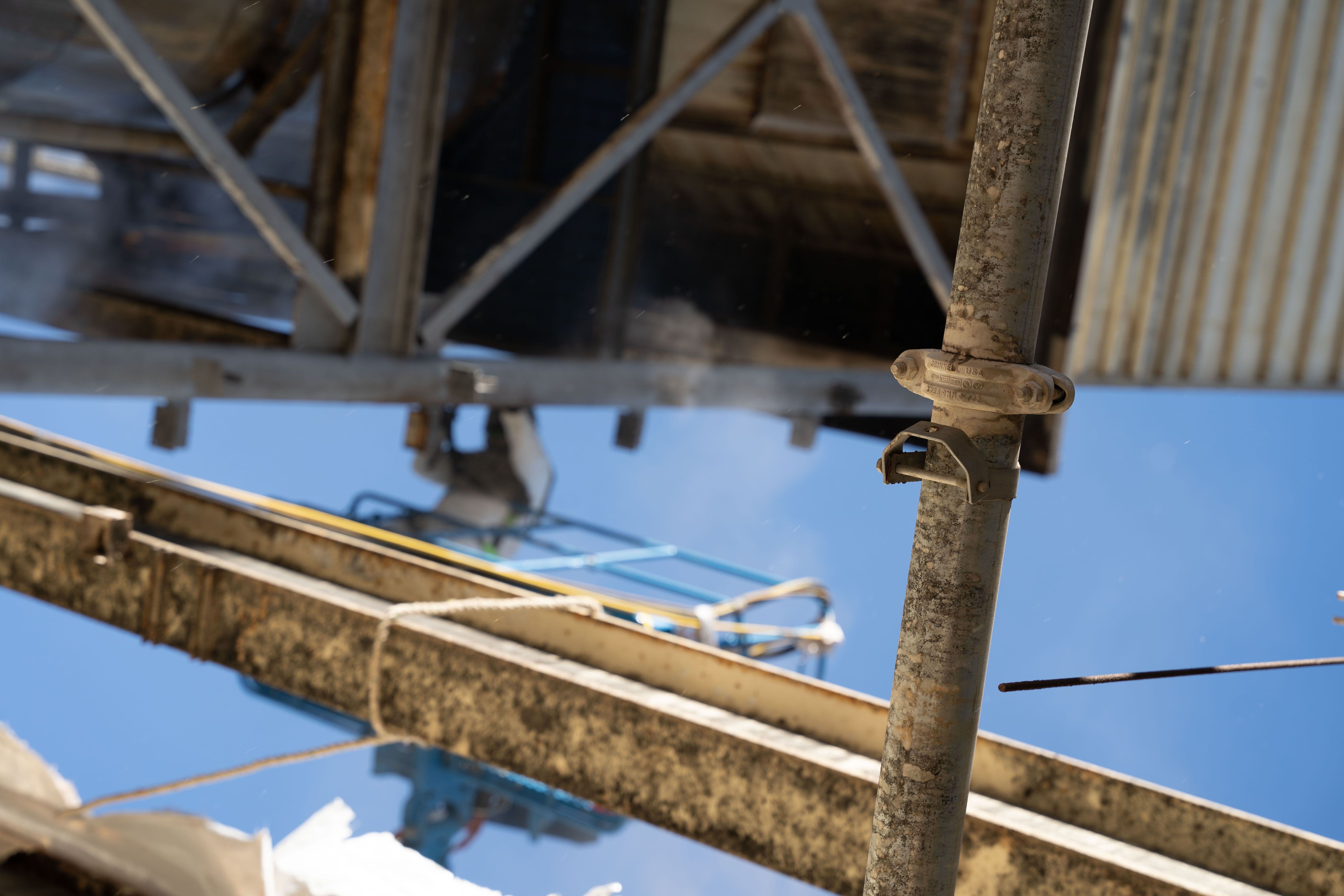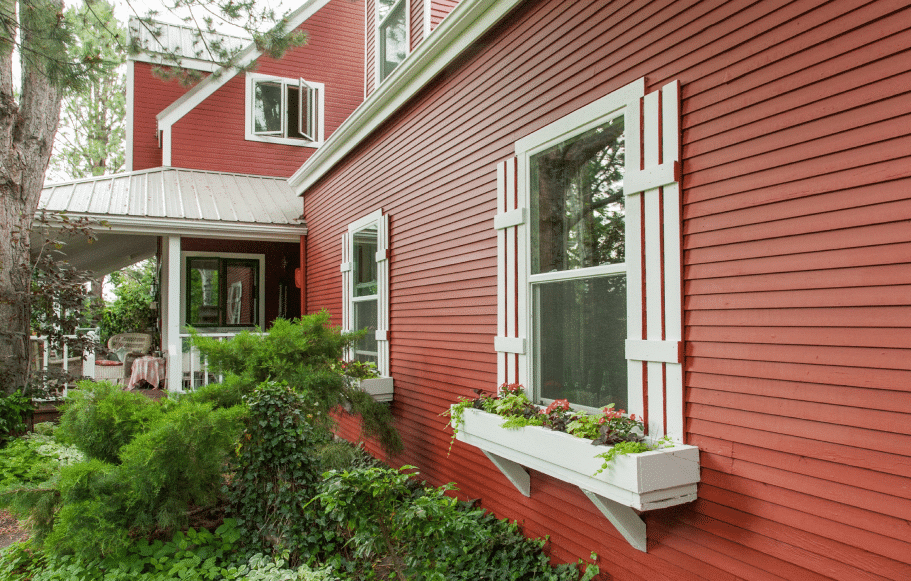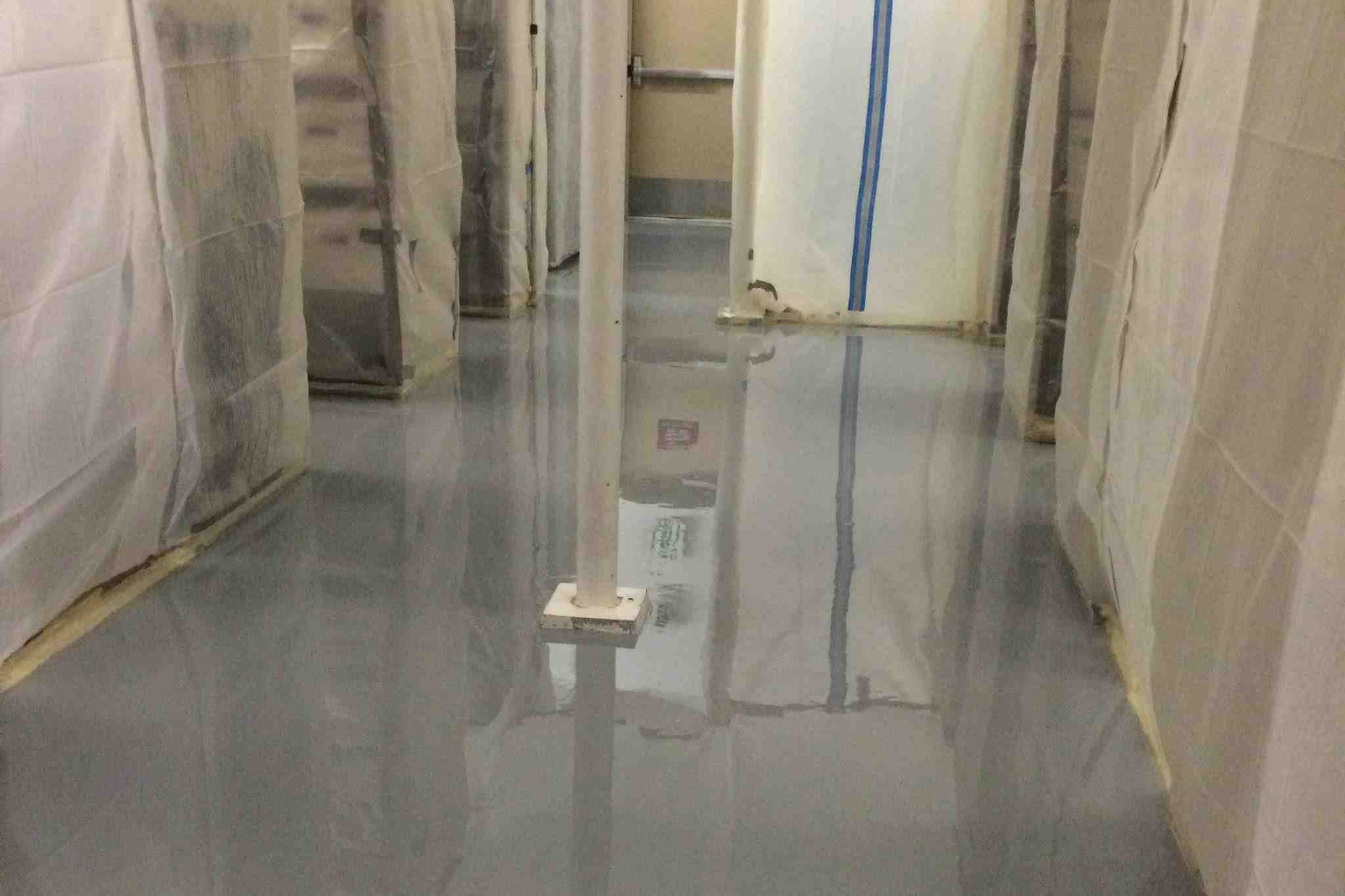What is Intumescent Coating? Fire Protection for Building Materials
August 18th, 2025
6 min read
By Jud Masters

Fire protection requirements can be some of the most technical–and expensive–parts of any commercial or industrial building project. Between local codes, insurance regulations, and material limitations, it's easy to overlook the coatings that make a structure safe and compliant. One of the most effective tools for achieving your goal of improved fire safety is intumescent coatings.
At Roe Painting, we've worked alongside general contractors, engineers, and facility owners to apply these coatings in everything from large-scale warehouses to mixed-use commercial spaces. We understand both the science behind how these coatings work and the practical demands of getting them applied correctly and on time.
This article will explain what intumescent coatings are, how they respond to fire, which materials they protect, and why they're often required for code compliance. We'll help guide you to determine whether your next project may call for this type of coating.
What is Intumescent Coating?
Intumescent coating is a special type of paint designed to expand when exposed to high heat, forming a thick, insulating layer that protects the material underneath from fire damage. This reaction doesn't just delay structural failure; in many cases, it can buy valuable time for evacuation, emergency response, and fire suppression.
These coatings are most often applied to structural materials like steel, wood, and concrete. Under normal conditions, they look and behave like any standard coat of paint. But when temperatures rise (typically above 350°F), the coating undergoes a chemical reaction, swelling up to 50 times its original thickness to form a charred, foam-like barrier. This barrier insulates the substrate, reducing heat transfer and delaying ignition or deformation.
Unlike concrete wraps or bulky fireproofing boards, intumescent coatings can be applied in thin, even layers that preserve the appearance of architectural elements. That's one reason they're commonly used in commercial and industrial environments where both fire protection and aesthetics matter.
How Intumescent Coatings React to Fire
Here's what happens in stages during a fire event:
- Heat Activation: At around 350°F, the chemicals in the coating begin to react.
- Expansion: The coating swells dramatically, often up to 50x its original thickness.
- Char Formation: A thick, carbonaceous char forms that insulates the surface beneath.
- Thermal Barrier: The char slows heat transfer, protecting structural elements from warping, melting, or collapse.
This "passive fire protection" process is designed to delay structural failure long enough for safe evacuation and emergency response.
Intumescent vs. Fire-Retardant Paints
While these terms are sometimes used interchangeably, intumescent coatings and fire-retardant paints are not the same.
- Intumescent coatings are designed to react and expand when exposed to high heat, forming a protective char.
- Fire-retardant paints are typically formulated to resist ignition or slow flame spread, but they don't expand or form a barrier.
If you're working with structural steel, building codes will often require an intumescent solution, not just a general fire-resistant coating.
When and Where are Intumescent Coatings Used?
Intumescent coatings are primarily used to protect load-bearing structures and other building elements from fire damage. Their versatility allows them to be applied in commercial, industrial, and certain residential projects, making them one of the most widely adaptable passive fire protection methods available.
Common Building Materials that Require Fireproofing
- Structural Steel – Steel loses about 50% of its strength at 1,100°F, which can lead to rapid structural failure during a fire. Intumescent coatings insulate the steel, maintaining its load-bearing capacity for a specified period.
- Wood – Often used in architectural features and exposed framing; intumescent coatings can help wood meet flame-spread ratings without looking unsightly if the surface is visible to the public.
- Concrete – While naturally fire-resistant, concrete can crack, spall, or lose structural integrity under intense heat
- Gypsum and Drywall – Certain assemblies may require enhanced ratings for corridors, stairwells, or mechanical spaces.
Situations That Require Intumescent Coatings by Code
While building codes vary by location, intumescent coatings are often required when:
- Steel or structural elements are exposed in a fire-rated assembly.
- Architectural design calls for open, visible structures instead of enclosed fireproofing.
- Retrofit or renovation projects need to upgrade fire resistance without altering design aesthetics.
- Industrial facilities that store or handle flammable materials must meet stricter safety standards.
In short: if your building exposes load-bearing materials or you're aiming to meet a specific fire rating without bulky coverings, intumescent coatings are likely part of the solution.
Material |
Typical Fire Rating Requirement |
When Intumescent Coating is Used |
| Structural Steel | 1-3 hours (depending on building type & code) | When steel is exposed and cannot be encased in concrete or fireproof board |
| Wood | Flame-spread rating Class A or B |
To achieve code compliance without altering visible wood finishes |
| Concrete | 1-2 hours for structural assemblies | As additional protection in high-heat or industrial settings |
| Gypsum/Drywall | 1-2 hours for corridors, stairwells | To enhance performance in assemblies needing higher ratings. |
Benefits of Using Intumescent Coatings
For many building owners, designers, and contractors, intumescent coatings solve two main challenges at once: meeting strict fire protection requirements and preserving the architectural vision of a space. When applied correctly, they deliver several key advantages over other passive fire protection methods.
1. Proven Fire Resistance
Intumescent coatings are engineered to delay heat transfer and extend the time before a structural material reaches critical failure temperature. In steel construction, this can be the difference between a structure holding up long enough for safe evacuation versus collapsing prematurely.
2. Preserves Aesthetic Design
Unlike bulky concrete wraps or board enclosures, intumescent coatings create a thin, smooth finish that can be painted in standard colors. This makes them ideal for:
- Open-concept commercial spaces
- High-end architectural features
- Exposed beams in warehouses, retail stores, and public venues
3. Supports Code Compliance
Many fire codes, including the International Building Code (IBC) and NFPA 101, recognize intumescent coatings as a valid method for achieving required fire-resistance ratings. They allow designers to meet 1-, 2-, or 3-hour fire ratings without sacrificing layout or material choices.
4. Versatility Across Materials
These coatings can be applied to steel, wood, concrete, and drywall, making them a flexible solution for mixed-material construction or retrofit projects.
5. Long-Term Performance
When properly applied and maintained, intumescent coatings can provide decades of protection without the need for frequent reapplication. This durability can help lower life-cycle maintenance costs.
Intumescent coatings protect both people and property, offering an effective, code-approved solution that integrates seamlessly into building designs, a combination that's difficult to match with other fireproofing methods.
Intumescent Coatings vs. Other Fireproofing Methods
Feature |
Intumescent Coating |
Concrete Wraps/ Fireproof Board |
Spray-Applied Fire-Resistive Material (SFRM) |
| Appearance | Smooth, paint-like finish (can be tinted) | Bulky, utilitarian finish | Rough, textured finish |
| Thickness | Thin-film (1-5 mm) | Thick (up to several inches) | Thick (up to several inches) |
| Suitable Materials | Steel, wood, concrete, drywall | Primarily steel and some concrete | Primarily steel and some concrete |
| Fire Rating Capability | 1-3 hours (depending on product/application) | 1-4 hours | 1-4 hours |
| Impact on Design | Minimal visual impact | Can alter room dimensions or design | Visually obtrusive |
| Installation Complexity | Requires skilled spray application | Moderate; requires framing and fastening | Requires special spray equipment |
| Maintenance Requirements | Low: periodic inspection recommended | Low; durable but may need repairs if damaged | Low; may need patching after impact |
How to Know If Intumescent Coatings Are Required
If you answer "yes" to any of these, your project likely needs intumescent coatings:
- Are load-bearing steel or wood elements exposed in the final design?
- Does the code require a 1-3 hour fire rating for these elements?
- Is the space open-concept, where other fireproofing methods would be visible or bulky?
- Are you working in a high-occupancy or high-hazard environment (assembly, industrial, storage of flammables)?
- Has your architect, engineer, or local building official recommended passive fire protection for exposed materials?
Pro Tip: Building codes like the IBC and the NFPA 101 outline where intumescent coatings are acceptable for achieving fire ratings. Local requirements can be stricter, so always check with your Authority Having Jurisdiction (AHJ).
Discovering the need late into the project can cause delays, budget overruns, and redesigns.
Problems and Misconceptions About Intumescent Coatings
Even though intumescent coatings are highly effective, there are common misunderstandings that can lead to code violations, wasted budget, or reduced performance.
Watch out for these:
- "Any fireproof paint will do."
- Wrong. Fire-retardant paint slows flame spread but doesn't expand to insulate. It won't meet most structural fire-rating requirements.
- "Once it's applied, it lasts forever."
- Coatings can be damaged by impact, moisture, or corrosion; periodic inspections are essential.
- "It's only for steel."
- It's also used on wood, concrete, and drywall assemblies when higher fire ratings are required.
- "It can be rolled on like normal paint."
- Proper application often requires specialized spray equipment, thickness measurements, and curing times to meet code standards.
- "It's expensive to consider."
- While material costs are higher than standard coatings, it can be more cost-effective than structural redesigns or bulky enclosures.
How Intumescent Coatings Are Applied
Applying intumescent coatings is more than just "painting it on." The process is technical and must meet manufacturer and code requirements:
1. Surface Prep: Clean, prime, and ensure the substrate is in good condition.
2. Application: Spray and frequently measure to ensure proper thickness of coating, often in multiple coats.
3. Curing: Allow proper drying time between coats and final inspection.
4. Verification: Measure coating thickness and document compliance for inspectors.
Why it matters: Improper application can void warranties, fail inspections, and reduce fire protection performance.
Safety First–Fire Protection That Performs
Intumescent coatings provide proven fire protection while maintaining the look and feel of your building's design. They work across steel, wood, concrete, and drywall, helping projects meet code requirements without bulky enclosures.
If your design includes exposed structural elements or you're aiming for specific fire ratings, the right coating can be the difference between a smooth inspection and costly delays.
What's next? Discuss your project with a contractor experienced in both the science and application of intumescent coatings. This ensures you choose the right product, meet code, and protect your investment.
At Roe Painting, our industrial and commercial teams work with architects, engineers, and facility managers to apply intumescent coatings to spec, delivering both compliance and quality. Schedule a complimentary estimate to dive deeper into the solutions that will protect your facility.
Jud has been with Roe Painting since 2017 and in the painting industry as a whole since 1999. He has a passion for estimating and selling a wide variety of painting projects. As the son of two teachers, he loves to educate his customers on what they should expect in a proper paint job. As VP of Sales, he enjoys developing estimating programs and teaching and coaching his sales team to deliver a confident contracting experience for every customer.


